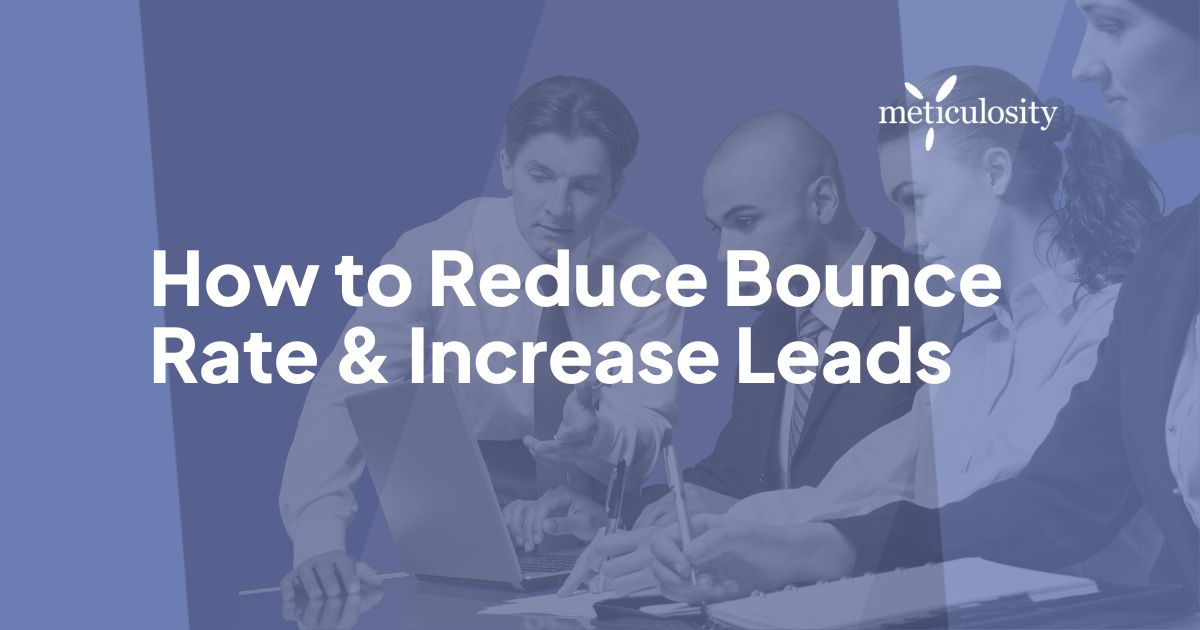Most marketers find themselves full of questions when it comes to achieving an ideal bounce rate. You might ask yourself, “Is a rate of almost 100 percent a good or bad thing?
Should I even consider website bounce when developing an online strategy?” Here, we’ll shed some light on what bounce actually is – and what you can do to reduce bounce rate on your site.
What is Bounce Rate?
Bounce rate is a traffic analytics term used to show the percentage of users who visit a website and leave without making any interactions.
What is a Good Bounce Rate?
The number is can be subjective depending on the website but a bounce rate range of:
- 26% - 40% is outstanding
- 41% - 55% is average
- 56% - 70% is high but not alarming for most site types
- <70% is definitely cause for concern - unless it's a blog, news article, event listing, etc.
Bounce vs Exit Rate
It’s important to note that rates for bounce and exits are different. While bounce measures “one-and-done” visits, exit rates are a bit more complex. Exit rates include the number of people who leave from a certain page, but that might not be the only page they viewed during their visit. This is why exit rates are often easier to decipher than bounce measurements.
Consider a thank-you page as an example. High bounce on a thank-you page would be a warning sign, as it means that people are visiting the page briefly and then clicking away.
They didn’t engage further, meaning no conversions were made. On the other hand, a high exit rate on a thank-you page could mean that the thank-you page was the last page they visited. The visitor likely left the page after downloading content or placing an order.
Kissmetrics has a great bounce rate infographic breaks it all down for you.
/Imported_Blog_Media/Bounce-Rate-2-750x500-2.jpg?width=650&name=Bounce-Rate-2-750x500-2.jpg)
How Can I Lower my Bounce Rate?
Now that you’re sure what constitutes website bounce, it’s time to take action. Typically, high rates for bounce indicate that the website page isn’t useful or interesting to visitors. However, it’s not time to take drastic actions like deleting a page or doing a complete site overhaul. Instead, follow these steps to ensure your page is running smoothly:
1. Ensure your Site is Optimized for Mobile:
Today, more searches come from mobile devices than desktop computers. Because of this, it’s essential to provide an inviting, mobile-friendly experience to visitors. This doesn’t simply mean building a responsive site – it also means building pages that load seamlessly and deliver interactive content.
One way to create engaging content is to utilize video. Videos can explain complicated topics concisely – in fact, most customers would prefer to learn about a product through a video instead of reading about it. Short videos perform better, as they require less data to load. Longer videos that slow down the user experience sometimes cause users to bounce.
2. Examine Bounce Across Different Sources
Sometimes, individual sources that direct traffic to a page can affect your site’s bounce. Breaking down the rate of bounce over several sources can help you further analyze your website’s performance.
It's helpful to examine the messages you’re posting across social media platforms. Does your post accurately describe what the content is about? Are visitors receiving the content they’d expect from clicking the image or link? These questions can help you determine whether your promotion strategy is working.
3. Avoid Distractions that Damage the User Experience
A solid mobile experience is essential when achieving your ideal bounce rate. Distractions like pop-up ads can result in an annoyed visitor, and they can even penalize your site in search results. The key thing is to develop a site that engages the user while encouraging conversion.
Of course, some pop-ups are successful. Delivering well-developed inbound messages can help add context to a website. However, it’s important to avoid adding messages that significantly interrupt the user experience.
4. Determine Whether Ranked Keywords are Sufficiently Covered by Your Content
When visitors feel misled by a site’s content in social distribution, they’re likely to bounce. This also applies to keyword rankings – matching keyword intent to your website content is important when it comes to satisfying the needs of organic visitors.
/Imported_Blog_Media/Bounce-Rate-3-750x600-Jun-28-2021-10-37-22-89-PM.jpg?width=650&name=Bounce-Rate-3-750x600-Jun-28-2021-10-37-22-89-PM.jpg)
While analyzing the keywords for which your page is ranking, be sure to align them with the page’s actual content. Once this is accomplished, you may wish to look at a topic cluster framework. This groups your site’s pages into clusters determined by subject, which can help you guide organic traffic to the appropriate pages.
It’s Time to Bounce
High website bounce often is a warning sign that your website may have content or functionality issues. Look at who visits your site, how long they visit, what devices they use, and where they’re referred from.
A technical SEO audit helps you identify keywords and allows you to determine what your visitors are looking for, helping you create content that’s aligned with their needs. This allows you to identify patterns that can help you fix your bounce problems and ensure your site’s success.


/Imported_Blog_Media/reduce-bounce-rate-1.jpg)




